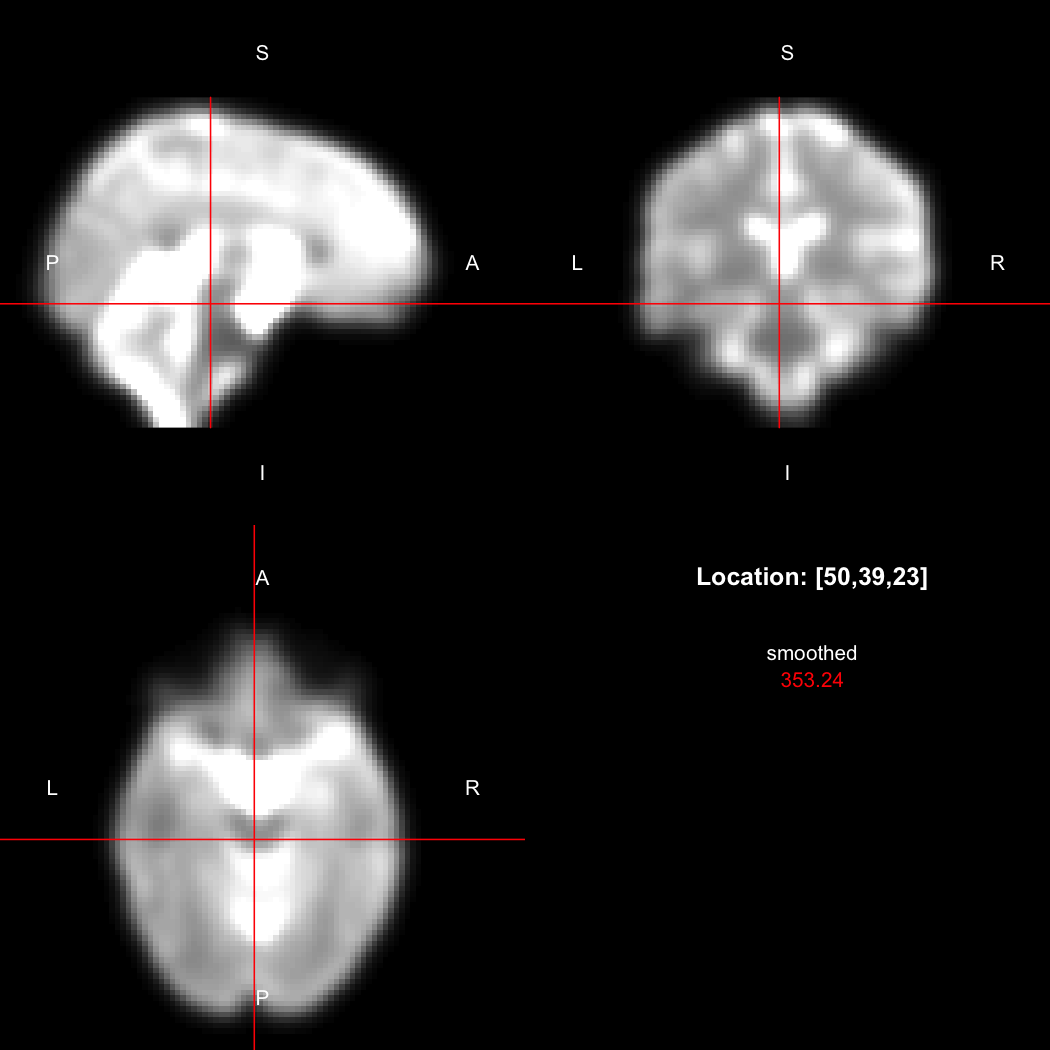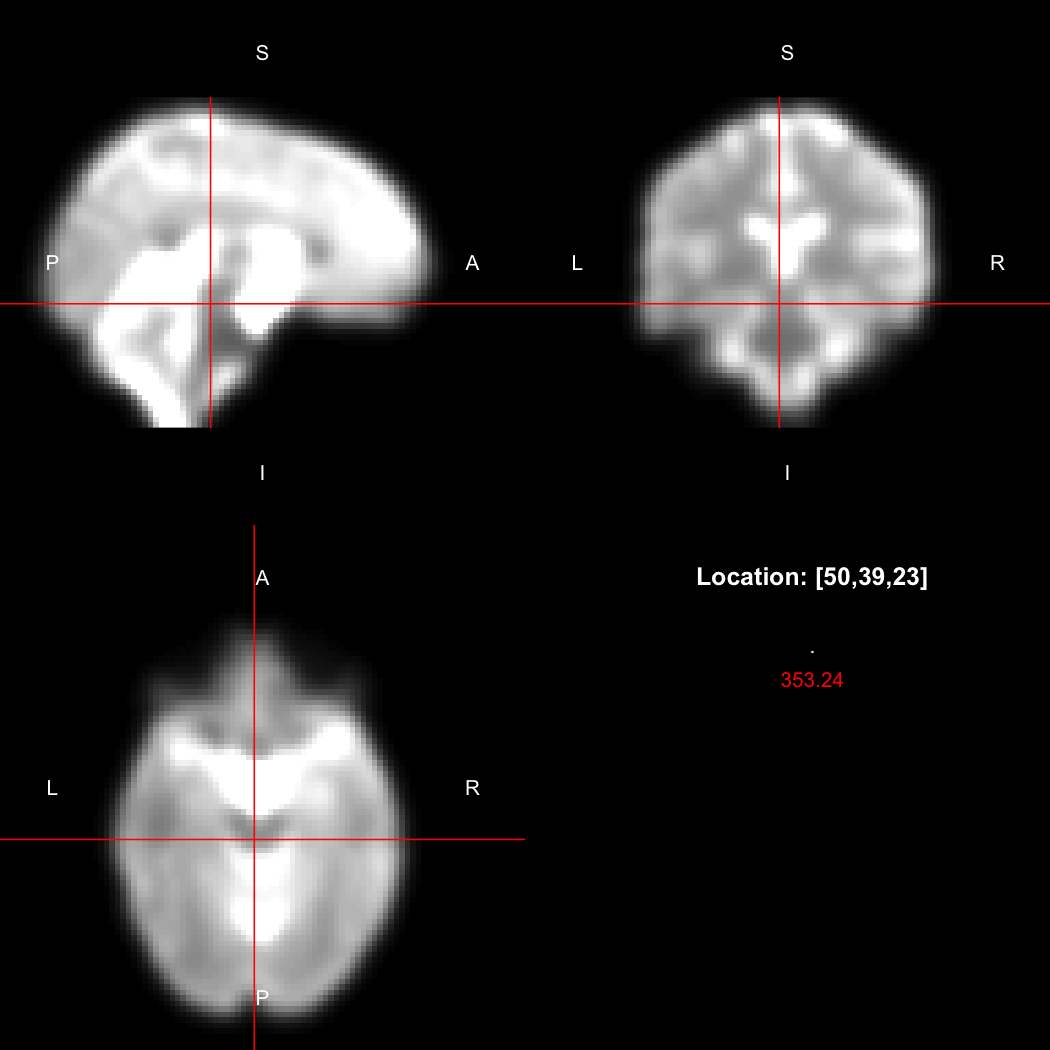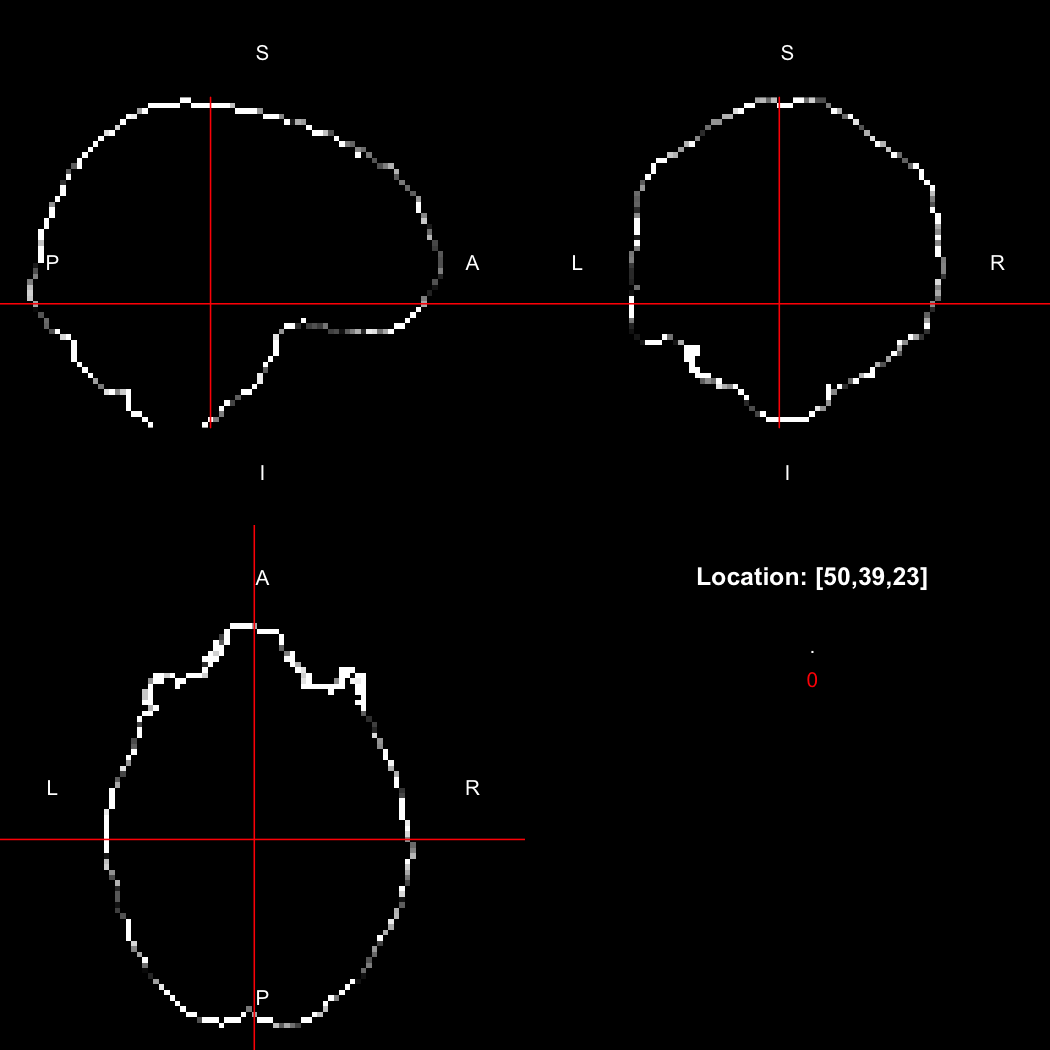The imbibe R package offers fast, chainable image-processing operations which are applicable to images of two, three or four dimensions. It provides an R interface to the core C functions of the niimath project by Chris Rorden, which is in turn a free-software reimplementation of fslmaths, so it has its roots in medical image analysis and is particularly well-suited to such data. The package was designed from the outset to work well with the pipe syntax widely popularised amongst R users by the Tidyverse family of packages.
This package is still at quite an early stage of development. The latest version can be easily installed using the remotes package.
## install.packages("remotes")
remotes::install_github("jonclayden/imbibe")The first step for any usage of the package is to create or read in an image. We will use a 3D medical image from the RNifti package by way of an example.
library(RNifti)
library(imbibe)
image <- readNifti(system.file("extdata", "example.nii.gz", package="RNifti"))We can also use the RNifti image viewer to visualise the image.
view(image)A simple example operation would be to smooth the image with a Gaussian smoothing kernel of standard deviation 4 mm. We can use standard R syntax to perform this operation, return a result, and then show it:
smoothed <- run(smooth_gauss(image, 4))
view(smoothed)
## Setting window to (0, 549.9)Here, smooth_gauss() requests the smoothing operation, and run() actually runs the pipeline and returns the processed image.
However, the pipe syntax provides an alternative, which can be further simplified because calling view() on a pipeline will implicitly run it.
image %>% smooth_gauss(4) %>% view()
## Setting window to (0, 549.9)Notice now smooth_gauss() is now called with only one argument, and view() with none, because the input to the pipe (%>%) is implicitly added first. The benefits to readability of this approach increase substantially as more operations are added to the chain:
image %>% kernel_sphere(radius=3) %>% dilate() %>% subtract(image) %>% view()
## Setting window to (0, 60)This example sets up a spherical kernel of radius 3 mm, dilates the image with it, and then subtracts the original image from the result to leave just the outer edge of the imaged object.




